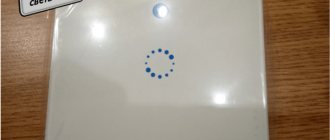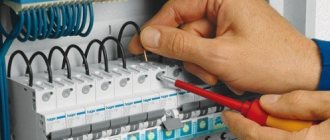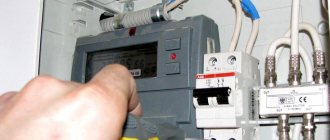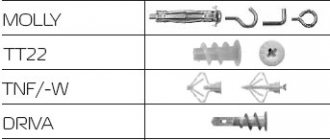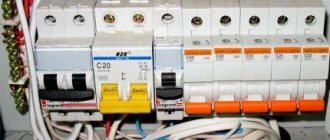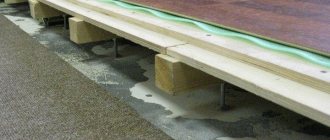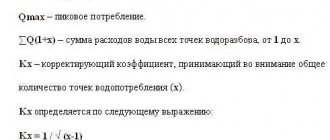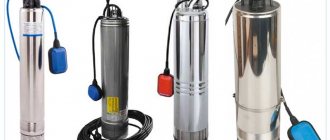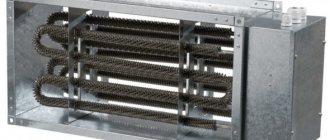The main purpose of the RCD is to disconnect the entire electrical network or its individual section from the power supply by opening the contacts. This ensures protection against electric shock and fire prevention. In modern electrical engineering, the use of these devices in many cases becomes mandatory, therefore, the question often arises of how to choose the right RCD. These protective devices are used not only in single-phase, but also in three-phase networks under various loads, therefore, their selection is made depending on the specific operating conditions.
Purpose of RCD and principle of operation
The main task of the RCD is to neutralize currents when various damage occurs in electrical installations. The residual current device is the most effective protective device. Unlike fuses or circuit breakers, RCDs are capable of breaking a circuit in a split second and saving a human life.
The danger is not only the possibility of direct electric shock. Sometimes simply touching the parts of live devices and devices is enough. Therefore, protective devices must operate in a timely manner. In order to correctly solve the problem of how to choose an RCD for a home, the conditions in which it will operate must be taken into account.
The operation of protective devices uses the phenomenon of electromagnetism. In this regard, the design of the RCD includes coils with a magnetic core connected to current-carrying wires that transmit electricity to the consumer. At the same time, a magnetic flux occurs, which is the arithmetic sum of the currents flowing through these conductors. In this case, the incoming currents have a positive value, and the outgoing currents have a negative value. In the absence of leaks and short circuits, they will be equal and add up to zero. This state of the circuit indicates the serviceability of the installed equipment.
In the event of a leak, a partial reverse flow of current occurs through the grounding conductors, which leads to an imbalance. The difference in differential currents causes the excitation of magnetic flux in the core. Its value will be proportional to the difference in electric current. When a certain threshold is reached, the device is triggered and turns off the power supply to consumers.
How to connect a washing machine to the mains?
It’s not enough to buy a washing machine, you also need to connect it correctly. When all pipes are connected, electrical work begins. Installation rules:
- Do not use the washing machine without grounding.
- Do not use extension cords. It is also not recommended to use a special extension cord with an RCD.
- In rooms with a high moisture content, sockets must be installed in a moisture-proof housing.
- Connect the washing machine through a protective device.
How to choose the right RCD
In order to select the best option for a residual current device, you need to know its basic parameters. Devices with different characteristics are used in specific conditions, which must be taken into account when choosing. The nature of leakage currents allows us to divide them into different types. This division depends on a smooth or sudden increase in current. RCDs with such characteristics are most widespread as they are most suitable for the widest operating conditions.
Triggering technology allows RCDs to be divided into electromechanical and electronic. In the first case, high-precision mechanisms are triggered as a result of leakage currents. These are the most reliable and expensive devices capable of operating under any conditions. Electronic devices are cheaper, however, for normal operation of the electronics, the use of external power is required. Their efficiency is significantly reduced when voltage surges occur. The response speed of RCDs allows their use in multi-level protection systems. This allows you to turn off all emergency sections individually.
There are other parameters that require knowledge of electrical engineering. Therefore, when choosing an RCD, it is best to seek help from qualified specialists. However, if the exact characteristics of the electrical network are known in advance, you can independently select the most suitable protective device. Among them, the most important are the following:
- Voltage. The RCD can be designed for a single-phase network with a voltage of 220 V or a three-phase network with a voltage of 380 V. The first option is usually used in apartments, and the second in private houses, dachas and cottages. If there are sections with one phase in three-phase wiring, then protective devices designed for 220 volts are used for them.
- Number of poles. In single-phase networks, two-pole RCDs are used, designed for one phase and zero, and in three-phase networks, four-pole devices are used, to which three phases and zero are connected.
- Rated current. This is also the throughput current of the RCD, which depends on the number and power of connected electrical appliances and equipment. Therefore, this indicator for a general (input) protective device must be calculated for all installed consumers. For linear RCDs, the total power is calculated based on the number of devices on a particular line. The RCD ratings set by the manufacturers are 16, 20, 25, 32, 40, 63, 80, 100 A.
- RCD leakage current. The value upon reaching which it turns off. It also varies in ratings of 10, 30, 100, 300 and 500 mA. For ordinary apartments, a 30 mA device is best suited. With a lower current rating, the device will constantly respond to even minor fluctuations in the network and turn off the power.
- Type of leakage current. The symbols AC, A, B, S and G are marked on the body of the device. For example, AC reacts only to alternating leakage current, and B - to direct and alternating currents. The rest of the markings also correspond to certain parameters, including the device shutdown time delay.
How to choose a unit for single-phase and three-phase networks?
Everything here is quite simple - just determine the number of poles on the device. For single-phase networks, two-pole devices are suitable, and for three-phase networks, four-pole devices are suitable. A typical representative of four-terminal circuits is the IEK 30mA RCD type AC VD1-63 MDV10-4-040-030.
It is sufficient for a transformer or inverter type welding machine. By the way, we have already written about how to choose a welding inverter, so you can follow this guide.
What types of RCDs are there?
The main classification of residual current devices is based on their operating current. For example, fire protection devices respond to currents of 100, 300 and 500 mA. They protect wiring from fire in the event of insulation failure and short circuit. Typically, an introductory RCD is installed behind the electric meter and provides protection for the entire facility. For people, electric current becomes dangerous at 50 mA. Therefore, devices that protect against fire are not able to protect a person from electric shock. For these purposes, devices are used that turn off the network when the current reaches a value of 10 or 30 mA.
Protective devices differ in the number of poles and can be used in single- or three-phase networks. Each type of device has a different way of functioning. The markings on the body of the device must be correctly deciphered and you need to know exactly what it means:
- AC is a category of RCD used only in alternating current networks. Accordingly, the device responds only to alternating current.
- A - protective devices of this category operate not only with alternating current, but also with direct current.
- B – has more advanced functions and responds to three types of current. In addition to direct and alternating current, the device turns off with rectified differential current.
- S – selective devices with the possibility of time delay when switching off.
- G – are also selective devices, but with a shorter time delay.
RCDs are also classified according to their technical design. This allows you to select a RCD of better quality. Most often, electromechanical devices are used that do not have their own power supply. They operate and shut down when a differential current appears.
Another type refers to electronic protective devices that require connection to an external power source. In this regard, the reliability of protection decreases, so such RCDs are used less frequently. When the auxiliary power is turned off, they turn off the network automatically, and when the power is restored, the network also turns on automatically. Some device designs do not provide for automatic switching on of the circuit when the power supply is restored.
Design features of devices
The residual current device is not too complicated and consists of only four main working elements, such as:
- differential current transformer;
- a special mechanism responsible for breaking the connected circuit;
- electromagnetic type relay;
- test node.
Opposite windings - zero and phase - are connected to the transformer device. When the network operates in normal standard mode, conductors in the area of the transformer core control magnetic fluxes, which are initially in the opposite direction.
Based on the type of design, residual current devices are divided into electromechanical and electronic. Products of the first type are a simplified type of safety module, and are triggered immediately upon initial detection of a current leak, regardless of what voltage is currently available in the network.
The main working component of an electromechanical device is a toroidal core with windings. When a leak appears in the area of responsibility of the device, voltage appears in the secondary winding level to activate the relay. This process causes the mechanism to shut down the network
For correct operation, the device does not require an external power source. It has good operational stability, since it does not have any electronic parts in its design that can be damaged or burned when the network is overloaded or as a result of sudden power surges.
It is quite cheap and is sold in almost any store that sells an assortment for household needs or the construction of electrical networks. It works reliably and for a long time, without requiring complex additional maintenance.
An RCD that has been triggered to open the network cannot be turned on immediately. First you need to find the area of the problem and fix it. Only then is it permissible to return the device to working condition
The electronic type RCD is a more modern control module and is equipped with sensitive microcircuits that respond to any changes that occur in the network. It works even if the mains voltage drops, since the transformer element “notices” only the difference in current flow.
The main working element is an electronic board located inside with a special amplifier. For correct functioning, it certainly needs power supplied from an external network. If the system has a base voltage of 220 V, the protective device immediately reacts to the leak and opens.
Despite a more advanced design device, electronic protection devices are not always able to perform their functions. For example, when the neutral wire in the network burns out, they may not work
The electronic device is very sensitive and as a result of constant voltage fluctuations it can fail and lose its protective functions, and this will not be noticeable outwardly.
In order not to suffer due to this situation, experts strongly recommend that users monthly check the RCD for functionality by pressing the “Test” button located on the device body.
How to choose an RCD based on power
Unlike circuit breakers that protect against overloads and short circuits, residual current devices are designed to protect against current leakage. The reason is faulty insulation of electrical appliances or contact of live parts with the housing. In these cases, the RCD is instantly turned off, the line is de-energized, and consumers are protected from electric shock.
In order to calculate the RCD by power, you need to know the total number of consumers connected to a given line. In the case when the question of how to select an RCD and a circuit breaker based on power is being decided, both protective devices must have appropriate values to ensure their normal operation. If the installation of circuit breakers is not provided for by the project, in this case the total power consumed by electrical appliances is calculated. As a rule, this value in a standard apartment in a multi-storey building does not exceed 25A.
When installing RCDs in private houses, it is recommended to divide all consumers into groups connected to separate lines extended to each floor, outbuildings, external lighting, etc. If the RCD has less power than the existing consumers, it will constantly turn off due to overloads. That is, the device will actually not work normally and will not be able to protect the line. Sockets with RCDs built into them, designed for a current consumption of 5A, will help partially solve this problem.
General tips for selection and installation
In addition to the criteria for selecting an RCD, there are general useful recommendations when purchasing and installing this equipment.
They will help you avoid making mistakes and immediately purchase a model suitable for a specific apartment or house.
Ignoring wiring installation rules and the absence of an RCD in the power supply circuit can lead to a fire throughout the house
Selection tips are as follows:
- It is recommended to take RCDs, which, when triggered, turn off not only the phase, but also the “zero”;
- There should be no grounded electrical appliances within the circuit controlled by the device;
- the device must operate during short-term voltage drops of 50% of the nominal voltage, which can occur in the first moments of a short circuit;
- RCD terminals must be made of slightly oxidized material and equipped with a reliable wire fixation system;
- preference when purchasing should be given to devices with short circuit and overload protection functions;
- The second level RCD need not be installed on safe groups of equipment, for example, on ceiling lighting sources;
- It is recommended to install devices with a threshold current flow of 10 mA on shower stalls and Jacuzzis;
- You should pay attention to the possibility of connecting aluminum wires to the device - some devices do not work correctly with them.
You can install the correctly selected RCD yourself. This process is not much different from installing a socket or switch.
It is important to carefully consider the wiring diagram and do as indicated on it.
Detailed information about the rules and diagrams for connecting RCDs in an apartment and house is presented in this article.
How to calculate RCD
In order to calculate the protective device and solve the problem of how to choose an RCD based on power, the table of parameters will help you do this as quickly and accurately as possible. It is necessary to use two technical characteristics - leakage current and maximum current - to obtain the desired result. The calculations use a mains voltage of 220 V, with a frequency of 50 Hz.
Calculation and selection of the maximum current rating of the RCD is quite simple. It is necessary to establish the value of the total electrical power of devices and equipment turned on simultaneously. For example, if this indicator is 6000 watts, then the calculated current value will be equal to: I = P/U. Substituting the required values into the formula, we get the result: 6000W/220V = 27A. The closest RCD from the standard range of rated currents will be 32A.
If the RCD is calculated based on leakage current, in this case a simplified scheme is used, according to which various types of protective devices are selected in accordance with the operating conditions of the objects:
- In ordinary residential premises - at 30 mA.
- In bathrooms, kitchens and other rooms with high humidity and higher requirements for electrical safety - 10 mA.
- At large facilities with electrical networks over 1000 m in length or at the input - 100 mA.
Quite often there is a need to select an RCD for a group of machines, the calculation of which is carried out according to certain rules. The installation of these devices in the circuit is carried out sequentially; the machines can be installed both before and after the RCD. The current values of the circuit breakers must be lower than in the RCD, but not less than the actual current consumption. Correct calculation of RCDs and circuit breakers shows that in the event of overloads and short circuits, the circuit breaker will protect not only the line itself, but also the residual current device installed on it.
Classification according to operating principle
All protective devices offered today on the market of related electrical equipment and accessories differ from each other in the type of operation. AC modules are installed in systems designed to protect household appliances from surges or slowly rising voltages and are triggered by alternating current.
Products A detect a constant pulsating current that increases in steps and react precisely to it. They are usually installed in homes for individual protection against extremes and combustion of washing machines, televisions and dishwashers. They have a structurally complex structure and are much more expensive than other elements of this class.
The most suitable place to locate an RCD in a residential building is an area close to a power source. Experts recommend placing the device directly next to the common meter
Units B are not suitable for homes or other residential areas. Their area of operation is enterprises and production workshops with a large amount of electronic equipment.
Selective devices S and G are triggered 1-4 seconds after a leak is detected. They are usually implemented in networks where several protective devices are present on one power line.
RCD current ratings
The rated currents of the main types of RCDs are 16, 25, 40 and 63A. This value corresponds to the current value that the device can pass through itself without time limits. Within this line, a selection of RCDs is made for the electrical panel of an apartment or private house.
The rated current value is necessary when deciding how to calculate an RCD for a group of machines. In this case, for protection you need to select a circuit breaker with a rated current less than or equal to the rated current of the differential switch. Experts recommend choosing a rating one step higher than that of the machine, since it can pass through itself a current greater than the rated one for a long time. If the currents are equal, during this period the RCD may simply burn out.
Example of calculating a difavtomat
Initial data:
- Power consumption - 2.2 kW.
- Rated current - 10 A.
20% margin = 2 A. It turns out that for a 2.2 kW washing machine you will need a device with 12 A or more. The best option is a shutdown current of 15 A. Choose the closest value. If 12 A comes out, you cannot install a 40 A device. This is dangerous for equipment. The differential shutdown current is 30 mA, no more.
Which RCD should be installed at the entrance to the apartment?
In modern high-rise buildings it is prohibited to use three-phase wiring, so many owners are wondering how to choose an RCD for an apartment. Meanwhile, there is nothing complicated here, since for single-phase wiring a two-pole device marked AC is used. Based on the leakage current, the RCD for the apartment is selected at the rate of 30 mA. Devices with a lower shutdown threshold may cause false alarms.
How many RCDs should I install in an apartment? It all depends on the total power of consumers. If it is too large, it is recommended to split the home network into separate lines and install a protective device on each of them. Additionally, a general RCD is installed at the entrance to the apartment to protect against fire if the insulation is damaged.
Often false alarms occur due to old electrical wiring. If these processes occur systematically, it may require complete replacement.
Malfunctions
There are often cases when the RCD turns off when the water heater or washing machine is turned on. There are a number of reasons for this:
- the water heater or machine itself is faulty;
- the installed RCD or automatic circuit breaker does not correspond to the parameters of the electrical network;
- there is a short circuit in the power cord;
- the motor, power supply or heating element is damaged;
- the installation of the RCD for the washing machine or water heater was carried out with errors;
- Voltage surges or current leaks have occurred in the electrical network.
An example of finding and eliminating one of the faults in which the RCD of a water heater knocks out is shown in the video:
If you choose and install the RCD correctly on the boiler and washing machine, you will ensure the operation of the equipment for a long time during washing and heating water, and protect against current leaks and fires. And most importantly, protect people from being exposed to electricity. Therefore, think about protection in advance so that you don’t have to deal with the consequences later.
Causes of electrical fires
Causes of electrical fires may include:
- Heating of conductors (local or over an extended area) due to overload.
- Sparking at the site of poor electrical contact (in connections, at the terminals of electrical appliances and devices)
- Leakage from non-insulated sections of the circuit (in connection, branch and feed-through boxes, distribution boards, electrical devices).
- The burning of an electric arc in any part of the circuit caused by a short circuit current.
- Damage to cable insulation.
Damage to cable insulation can occur for the following reasons:
- Electrical - from overvoltage and overcurrent.
- Mechanical - impact, pressure, squeezing, bending, damage by a foreign body.
- Environmental influences - humidity, heat, radiation (ultraviolet), aging, chemical exposure.
The development of a short circuit from a leakage current, leading to a fire, occurs as follows:
- At the point of microdamage to the insulation, an extremely small point current begins to flow between energized conductors.
- Under the influence of humidity, pollution, and the penetration of dust over time, a conductive bridge is formed through which leakage current flows.
- As the insulation condition deteriorates, starting from a current value of approximately 1 mA, the conductive channel gradually becomes charred, a “carbon bridge” appears, and the current continuously increases.
- With a leakage current of 150 mA, which corresponds to a power of 33 W, there is a real danger of fire due to the heating of various flammable materials by the heat generated at the site of insulation damage.
Connection diagram of the washing machine to the power supply system
For a washing machine, it would be better to install wiring that is powered directly from the electrical distribution panel. The RCD is installed in a place convenient for use, but preferably outside the bathroom. The socket is connected to the power supply only after a residual current device.
What not to do when connecting a washing machine:
- Close the body of the washing machine with metal water pipes or the heating system (in other words, do not ground it);
- Close the grounding and neutral contacts in the socket - this will trigger the RCD.
Why are extension cords banned?
The power wires transmit power of more than 2 kW. Therefore, all disconnecting connections must ensure perfect contact. This is possible with European sockets that have a large area of contacting contacts. But this cannot be done without losses, and extension cords only increase them. The consequence of losses is heating. Extension cords are often plugged into regular sockets - with the help of adapters, losses increase even more. Due to constant heating, contacts burn and plugs and sockets deteriorate. As a result, a fire occurs.
Installation diagram
Connecting an RCD in a single-phase and three-phase electrical network, where a phase L-conductor and an N-conductor are used, often uses the option of switching on protection without a grounding system. A similar procedure exists, as a rule, in old housing stock.
RCD diagram in network 220 with grounding
Modifications for connecting the device to a single-phase network:
- General protection 220 V network in a house without a ground loop. The device is mounted in an electrical panel. It is located between the introductory machines and other single-lane AVs. The device guarantees the protection of absolutely all outgoing power lines in the event of a leakage current. This option of connecting protection without grounding has the only drawback - since the protective device is common, in the event of an accident it will be impossible to correctly determine which power line the accident occurred on.
- General RCD for 220V, electric meter and grounding system.
It is necessary to pay attention to the fact that in the newest protective systems, in order to correctly connect the protection, it is not necessary to install supply lines only on the top or bottom of the device. They allow both options, therefore, in order to avoid mistakes, you will first need to carefully study the technical documentation when connecting the RCD.
